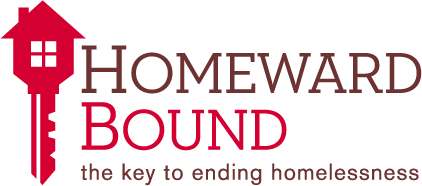Homeward Bound’s 2000th client moves into her own home!

The Struggle is Real.
April is a single mom with two teenage daughters who were homeless for six years. She grew up with a single mother who experienced domestic violence and struggled to find healthy ways to cope and keep her children safe. April also experienced relationship violence as an adult and created similar hardships for her and her children.
April had to live separately from her daughters because she did not have a permanent home.
April lived in and out of shelters in Asheville while working at a local motor lodge. Shelters felt like a prison to April, waiting for lockers and showers and strict bedtimes so, often, she lived on the streets. Homelessness required her to walk all night and stay awake to withstand the coldness of winter.
April’s Daughter Comes to Town
April’s oldest daughter texted her in June of 2018 to say she wanted to live with her. April had been staying at a local shelter, but they wouldn’t take in the 17-year-old. Rather than be separated again, April and her daughter began sleeping in their Jeep in church parking lots. They acquired many trespassing tickets throughout the winter time while April’s daughter was recovering from pneumonia. The Jeep was finally towed, along with all of their personal belongings. Throughout this time, April and her daughter continued to go to AHOPE for showers, charging their cell phones, snacks, and other needed services.
On January 29, Homeward Bound Case Manager Amanda moved April and her family into their very own home. With a letter from Homeward Bound saying they were housed, the courts dropped the trespassing charges they received while living in their car.
April wants people to know that ‘the struggle is real’ and that there aren’t enough shelters for single mothers or fathers with children. She and her daughters had to wait over four months for their apartment because three bedroom units are few and far between.

She also explains that working full time or even part-time, and living on the streets, is virtually impossible when you are trying to keep your family together and safe. Now that they have moved into their own home, they are making plans for the girls to continue their education and for April to get back to work.


